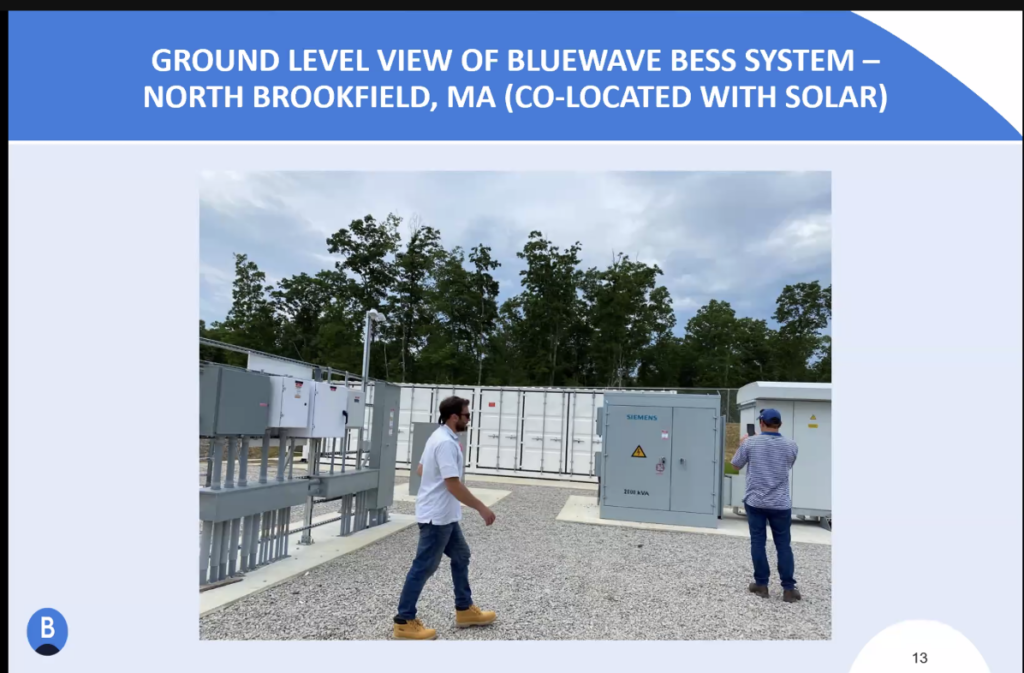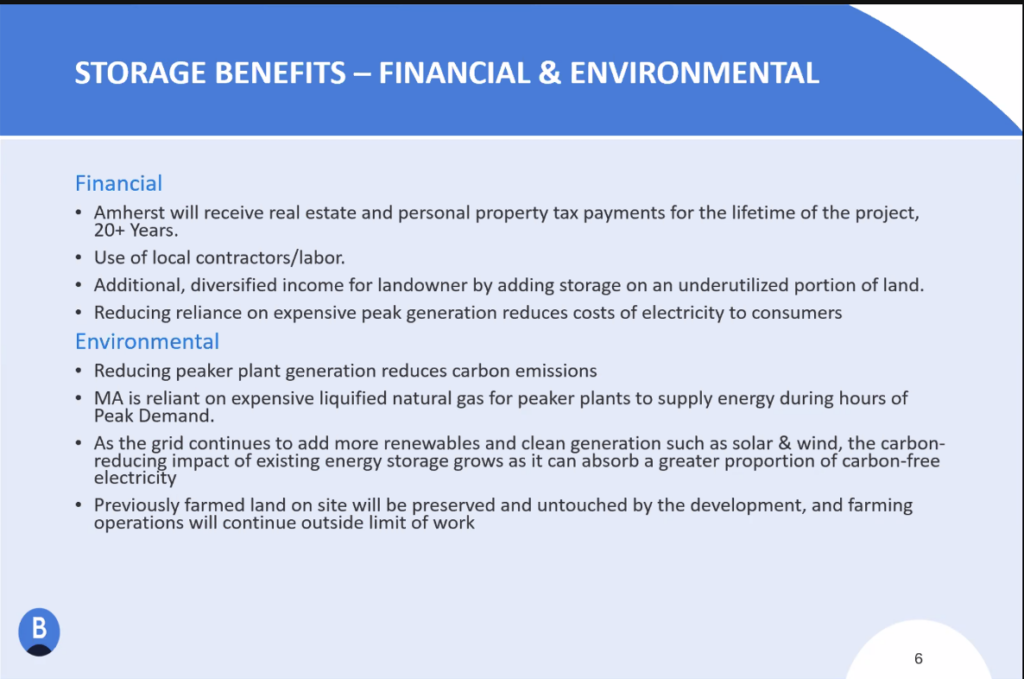Zoning Board Of Appeals Examines Plans For Battery Storage Unit In North Amherst
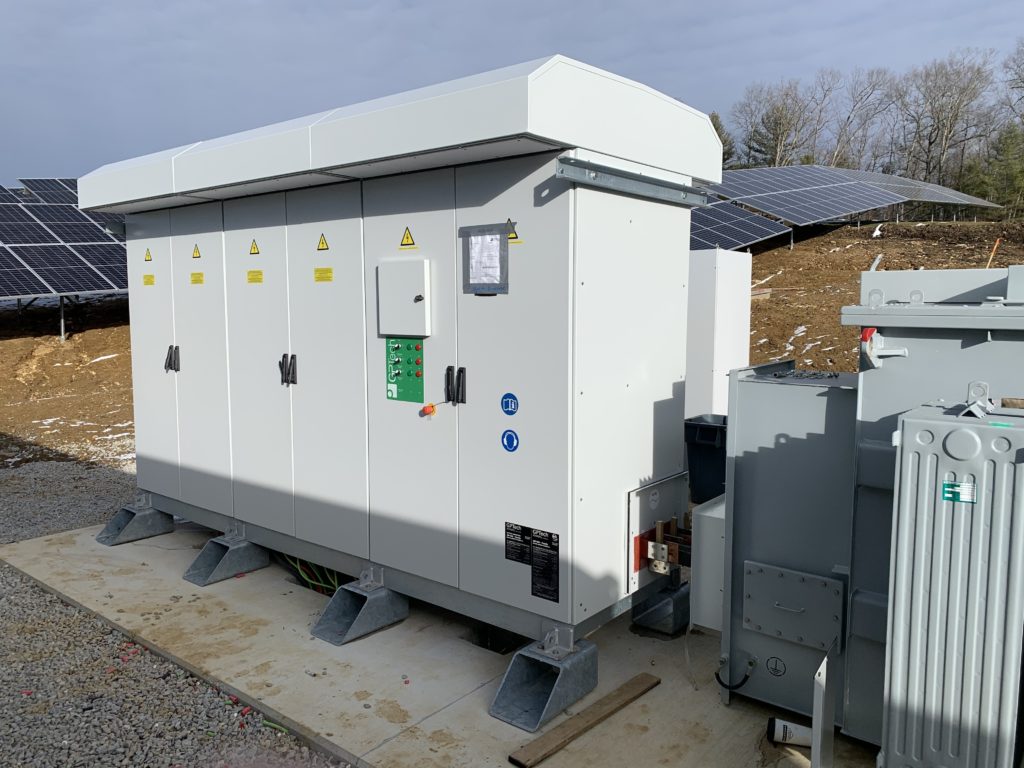
Compact battery storage container from Blue Wave Solar. Photo: Blue Wave Solar
Report On The Meeting Of The Amherst Zoning Board Of Appeals (ZBA), April 27,2023
This meeting was held over Zoom and was recorded.
Present
Steve Judge (Chair), Tammy Parks, Craig Meadows, and Sarah Marshall (Associate member). Dillon Maxfield and John Gilbert were absent, so the vote needed to be unanimous to approve the Special Permit)
Staff: Rob Watchilla and Chris Brestrup (Planners), Rob Morra (Building Inspector), and Chris Bascomb (Fire Department).
The number of members of the public attending was not announced.
Blue Wave (see photo below) proposes to construct an 18.87 MWAC/75.48 MWh Battery Energy Storage System (BESS), under Sections 3.340 (Transformer Station or other energy facility) on land owned by Tso and Rose Cheng of Deerfield, at 515 Sunderland Road. The site is just north of the power station near the Sunderland line on Route 116, the site of the former Annie’s Garden Center from 1992 to 2013. BESS’s in Massachusetts can range from accessory units seen on Solar Arrays to independent facilities connected to the local power grid.
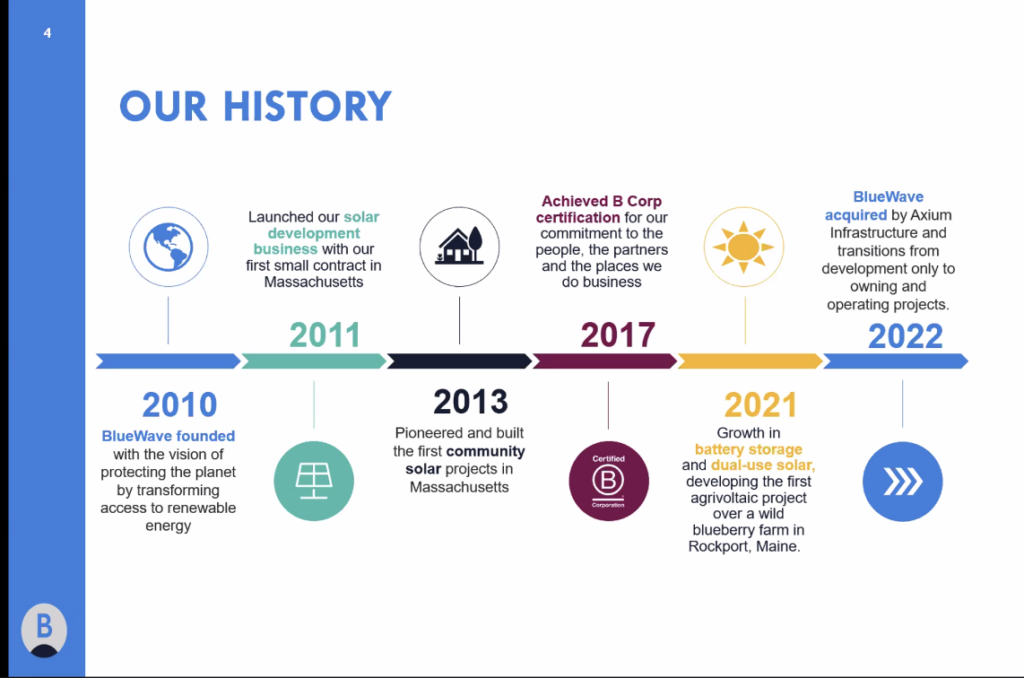
The proposed project is located in the Low Density Residence (R-LD) and Farmland Conservation (FC) Zoning Districts with its eastern half located in a flood plain. This use is allowed by SP, Special Permit, in all districts, except by right with Site Plan Review in the Commercial and Light Industrial zoning Districts. The Conservation Commission has already acted on this parcel and crafted conditions to protect the on-site wetland resources .
The project is part of the Massachusetts Clean Peak Program, which is specifically designed to incentivize energy storage projects throughout the Commonwealth. Because the proposed use is the first of its kind seen in the Town of Amherst and is also a newly emerging use throughout the Commonwealth, criteria do not exist regarding what information is needed for realistic enforceable conditions on a Special Permit, if granted, or of reasons to deny a permit. The jargon connected with this installation is also new for board members and the public, so it is particularly difficult for a lay person to evaluate.
Quoting from the Planning Staff report to the ZBA:
“According to [the applicant’s] cover letter, the site will be accessible by a proposed 12-foot-wide gravel access road that connects to an existing gravel driveway. The gravel driveway has two curb cuts onto Sunderland Road. The proposed battery system is a Canadian Solar Solbank stationary battery energy storage system.
The Solbank system utilizes lithium-iron phosphate (LiFePO4) battery cells situated in stacks and enclosed in 20’ ISO, NEMA 3R rated containers. The containers are primarily located in pairs throughout the site, with appropriate clearances between the units to allow for system access and maintenance, following manufacturer recommendations. Solbank BESS’s utilize liquid cooling for the battery stacks and forced-air cooling for non-battery electrical equipment to maintain optimal thermal operating conditions within the battery storage containers.”
“Each battery unit contains constant cell and enclosure-level monitoring of thermal, electrical, and atmospheric conditions for comprehensive fire prevention and detection measures. Additionally, the enclosure can be equipped with several optional fire-suppression systems (at the discretion and advice of the Amherst Fire Department). On-site, the battery units will be seated on concrete pads and ancillary electrical equipment will also be seated on concrete pads. All battery units are located a minimum of 100 feet away from all property boundaries and residential structures, per NFPA 855 guidelines.”
“The total floor area of the system is approximately 7,500 square feet. The system will be surrounded by a 16-foot-tall sound barrier wall, and will have a lockable gate entrance at the west end of the fenced area. Vegetation will be planted around the perimeter of the site (outside of the sound wall) to provide additional screening and aesthetics. The battery storage system will be connected to the existing power grid at Sunderland Road via a mixture of overhead and underground electrical lines ….”
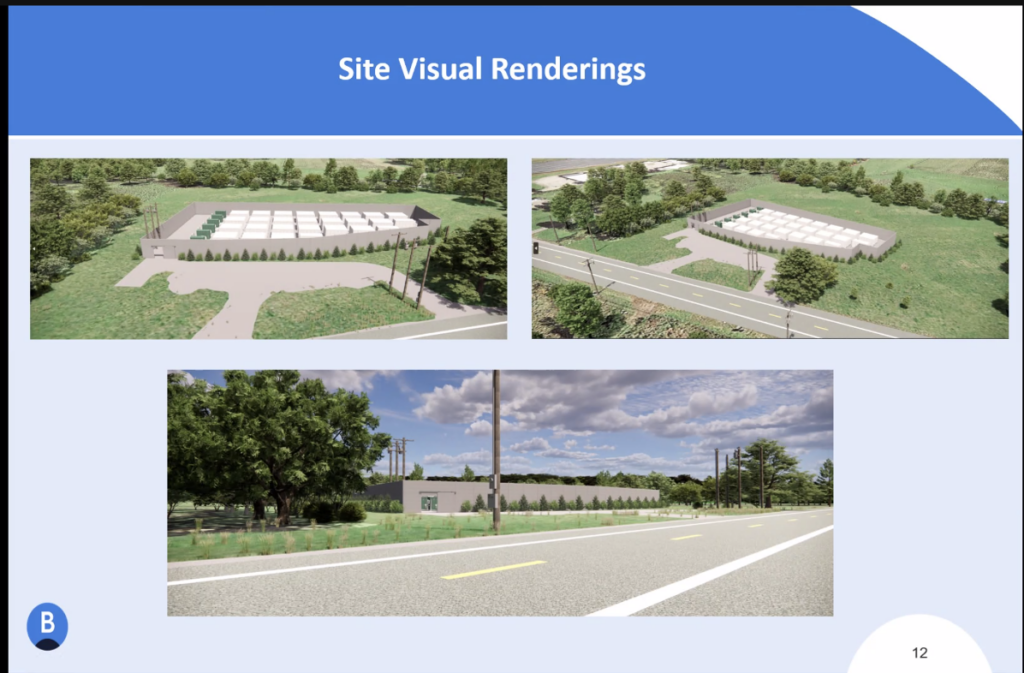
Construction of the system would be expected to last four to six months, depending on the timeline for local electrical distribution infrastructure upgrades identified as necessary by Eversource.
During the life of the project, the total energy capacity of the battery units will degrade. Blue Wave may install additional battery units intermittently over time to augment the system size to remain at the initial 18.87 MWAC. The useful life of a battery unit is about twenty years. Old batteries will be removed or replaced and “At the termination of this agreement, Blue Wave will immediately return all disturbed areas of the Property and Project Site to their former condition.”
The chair and members of the ZBA were favorably impressed by the Blue Wave presentation, but had many questions regarding sound levels emanating from the site, fire suppression, maintenance of the site etc. that will be addressed when the hearing is continued on May 25 at 6 pm.
